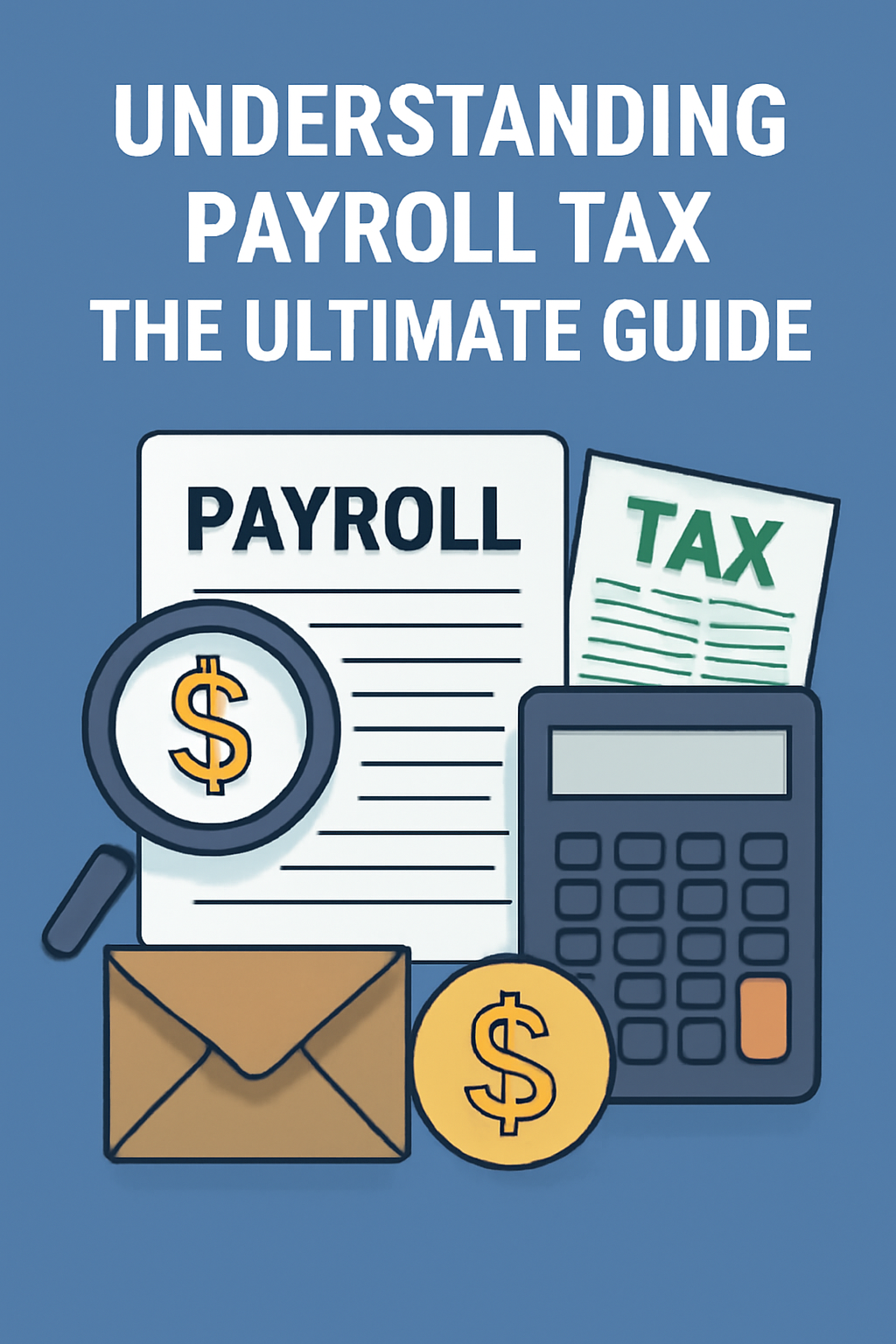Navigating payroll tax can feel like walking through a maze of rules, rates, and regulations. If you own a business or manage employees, it’s crucial to grasp the ins and outs of payroll taxes—not just to stay compliant, but also to avoid unexpected liabilities down the road. This guide will provide you with clear, actionable insights into payroll tax, including why it matters, how it works, and how you can ensure your business stays on track. Let’s dive in!
Introduction: Why Payroll Tax Matters
If you’ve ever run payroll for your employees, you know it’s about more than just cutting a paycheck. Payroll tax is a critical part of ensuring your business complies with federal and state tax laws, but it also helps fund essential public services like Social Security, Medicare, and unemployment benefits. Whether you’re managing a large team or a small business, understanding payroll tax is essential to keeping things running smoothly.
In this guide, we’ll break down payroll taxes into digestible sections, offering real-life examples, expert insights, and everything you need to make payroll tax work for your business.
What Is Payroll Tax? (Snippet-Ready Definition)
Payroll tax is a tax imposed on employers and employees to fund government programs, such as Social Security, Medicare, and unemployment insurance. It’s calculated as a percentage of wages paid to employees and is typically withheld from their paychecks. Employers also contribute a portion, matching certain taxes, and are responsible for remitting these funds to the appropriate government agencies.
The Problem: Why Payroll Taxes Are So Confusing
When you’re a small business owner, it can feel like the world of payroll taxes is one big labyrinth. You’re required to navigate federal, state, and sometimes even local tax laws, each with different rates, thresholds, and filing requirements. Add in that taxes change over time, and it’s no wonder many small business owners struggle with payroll compliance.
For instance, imagine this: You’ve just opened a small online store in the USA, and things are going well. You hire your first employee and—boom—payroll taxes come into play. You now have to figure out how much to withhold from their paychecks, which tax forms to file, and how to submit the taxes to the right authorities. If you fail to do so, you could face hefty fines or penalties that could cripple your business.
Many business owners turn to small business bookkeeping services in USA for help. But, the key is not just outsourcing—it’s understanding the system in place and knowing what you need to track and report.
How to Handle Payroll Tax: A Step-by-Step Guide
Now that you understand the complexity of payroll taxes, let’s break down exactly how you can handle them. While the process can be daunting, breaking it into steps makes it much easier to manage.
Step 1: Register for an Employer Identification Number (EIN)
Before you start paying employees, you need an Employer Identification Number (EIN), which the IRS uses to track your payroll tax obligations. This is essentially your business’s tax ID number, and you can apply for it online through the IRS website. Once you have an EIN, you can start filing payroll taxes.
Step 2: Classify Your Employees Correctly
Accurately classifying employees is essential. The IRS distinguishes between employees and independent contractors, and the tax rules are different for each. For employees, you’ll withhold taxes from their paycheck, while contractors handle their taxes themselves. If you’re unsure, it’s worth consulting accounting services for small business in USA to avoid misclassifications.
Step 3: Calculate Payroll Taxes
Payroll taxes consist of several components, including:
- Federal Income Tax: Withheld based on the employee’s W-4 form.
- Social Security Tax: 6.2% of wages, split between the employer and employee.
- Medicare Tax: 1.45% of wages, also split between employer and employee.
- Federal Unemployment Tax (FUTA): Paid by the employer.
You’ll need to calculate and withhold these taxes from your employees’ paychecks. You should also match the employer’s portion of Social Security and Medicare taxes.
Step 4: File and Remit Taxes
Once you’ve calculated the taxes, the next step is to file them. This can be done through the IRS’ Electronic Federal Tax Payment System (EFTPS), where you will remit payments on a regular basis. Your state might also have its own filing system for state income taxes and unemployment insurance.
Step 5: Stay Up to Date with Changes
Payroll tax rates and rules change frequently. For example, Social Security tax rates may fluctuate, or new tax credits might become available. It’s important to keep up-to-date with these changes to ensure you’re compliant.
Many small business owners work with accounting services for small businesses in the USA to stay on top of these shifting rules, minimizing errors and maximizing efficiency.
Comparing Payroll Tax Management Solutions: In-House vs. Outsourcing
In-House Payroll Management
Managing payroll taxes in-house might be a viable option if you have a small team and some experience with accounting. However, it can be time-consuming and error-prone, especially if you’re not familiar with the intricacies of payroll tax law. The primary benefit here is control—you can keep all aspects of payroll within your business and have direct oversight.
Outsourcing Payroll to Experts
For many small business owners, outsourcing payroll to professionals who specialize in small business bookkeeping services in the USA is a smart move. When you outsource, you tap into the expertise of accountants and payroll tax specialists who are well-versed in local, state, and federal tax laws. This significantly reduces the likelihood of errors or penalties and frees up your time to focus on growing your business.
Why Payroll Tax Matters: The Benefits
Understanding and properly managing payroll tax isn’t just about avoiding penalties. There are several benefits that directly impact the success and stability of your business:
- Compliance: By staying on top of payroll taxes, you avoid IRS penalties, interest, and potential audits.
- Employee Trust: Ensuring accurate tax deductions builds trust with employees. They know their taxes are being handled correctly, which boosts morale.
- Business Growth: Freeing up time by outsourcing payroll allows you to focus on running and expanding your business.
Take the example of Emma, a small business owner who runs a boutique in New York. After hiring an experienced payroll provider, she noticed not only an improvement in her financial records but also a stronger relationship with her employees, who appreciated the timely and accurate tax filings.
Expert Insights: Payroll Tax Advice from a Tax Pro
I spoke with Mark Taylor, a CPA who specializes in payroll and tax compliance for small businesses, who gave this expert advice:
“Many small business owners fail to realize that payroll tax is more than just a quarterly task. It’s about creating a sustainable system that ensures you comply with ever-changing regulations. If you’re overwhelmed, don’t hesitate to consult with professionals. Outsourcing payroll can save you more money in the long run than trying to handle it yourself.”
FAQs About Payroll Tax
1. What are the most common payroll tax mistakes businesses make?
One common mistake is misclassifying employees as independent contractors. This can lead to major penalties. Always ensure you’re classifying workers correctly.
2. How often do I need to file payroll taxes?
This depends on the size of your business and your filing schedule. Some businesses must file quarterly, while others are on an annual schedule.
3. Can I deduct payroll taxes from my business income?
Yes, payroll taxes can be deducted as a business expense, reducing your taxable income.
4. How can I ensure my payroll taxes are calculated correctly?
You can use payroll software or hire a professional accounting service for small businesses in the USA to ensure accuracy.
5. Is it possible to handle payroll taxes without a CPA?
While it’s possible, it can be risky. Hiring a CPA or utilizing small business bookkeeping services in the USA can reduce mistakes and keep you compliant.
Conclusion: Key Takeaways
Payroll tax may seem like a mountain to climb, but with the right approach and understanding, it becomes much easier to navigate. Whether you manage it in-house or outsource to experts, knowing the basics can help you stay compliant and avoid costly errors. By following the steps in this guide, you’re already on the path to payroll tax success. So, take action today—stay informed, stay organized, and keep your business running smoothly!
Want help managing your payroll tax? Consider working with trusted accounting services for small businesses in the USA to make sure you get everything right.



